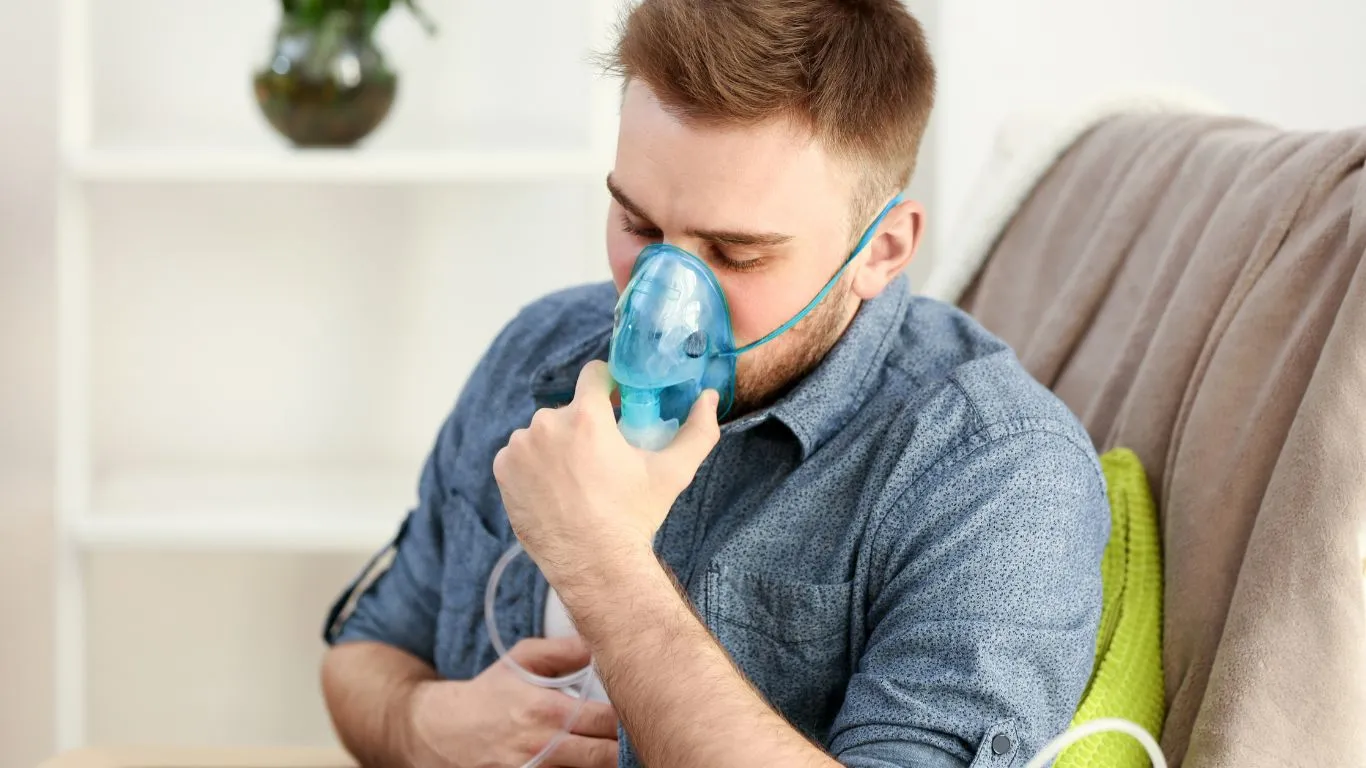Best Ways to Improve Breathing with Asthma – Breathe Easier Today!
If you have asthma, you know that breathing isn’t something you take for granted. I’ve worked with countless patients who struggle daily with tight chests, wheezing, and the constant worry of an unexpected attack. But here’s the good news—there are some of the best ways to improve breathing efficiency with asthma that can truly make a difference. I’ve seen these strategies work firsthand, and I’m excited to share them with you.
Understanding How Asthma Affects Breathing
Before we jump into the solutions, it’s important to understand why asthma makes breathing harder in the first place. When you have asthma, your airways are super sensitive. Triggers like dust, pollen, smoke, or even cold air can cause them to swell and tighten, making it feel like you’re breathing through a tiny straw.
Common Symptoms of Poor Breathing Efficiency
- Shortness of breath, even with mild activity
- Frequent coughing, especially at night
- Wheezing or a whistling sound when you breathe
- Chest tightness that feels like a heavy weight
Sound familiar? You’re not alone. But the right techniques can help ease these symptoms and improve your overall lung function.
 Breathing Techniques to Maximize Airflow
Breathing Techniques to Maximize Airflow
One of the biggest game-changers I’ve seen for asthma patients is learning the right breathing techniques. When your breathing is more efficient, your body works less to get oxygen, meaning less strain on your lungs.
Pursed-Lip Breathing
This is one of my go-to recommendations. It helps keep your airways open longer, reducing the feeling of breathlessness.
- Inhale deeply through your nose for about two seconds.
- Purse your lips (like you’re whistling) and exhale slowly for about four seconds.
- Repeat until your breathing feels more controlled.
This technique is great during an asthma attack or anytime you feel out of breath.
Diaphragmatic (Belly) Breathing
Most people breathe using their chest, but belly breathing engages the diaphragm and allows for deeper, more effective breaths.
- Lie down or sit comfortably with one hand on your belly.
- Inhale deeply through your nose, feeling your belly rise.
- Exhale slowly through your mouth, focusing on squeezing all the air out.
- Practice for 5-10 minutes a day for stronger lungs.
My patients who practice this technique daily often notice fewer asthma flare-ups over time.
 Strengthening Lung Function Through Exercise
Strengthening Lung Function Through Exercise
I know what you’re thinking—exercise with asthma? It might seem counterintuitive, but the right kind of physical activity can actually improve lung capacity and help you breathe easier.
Best Low-Impact Exercises for Asthma
- Walking: A gentle, effective way to increase lung endurance.
- Swimming: The humidity in pools can help keep airways from drying out.
- Yoga: Focuses on deep breathing, improving lung control.
- Cycling: Keeps the heart and lungs strong without excessive strain.
One of my asthma patients was afraid to exercise for years, fearing it would trigger attacks. But after slowly incorporating swimming and yoga, she found herself relying on her inhaler less and enjoying more active days. Small steps make a big difference!
 The Role of Environment in Better Breathing
The Role of Environment in Better Breathing
Your surroundings play a huge role in how well you breathe. Many people don’t realize just how many asthma triggers exist in their daily environment.
Indoor Air Quality Matters
Simple changes at home can make a world of difference:
- Use a HEPA air purifier to remove allergens from the air.
- Keep humidity levels between 30-50% to prevent mold growth.
- Vacuum regularly with a HEPA-filtered vacuum to trap dust and pet dander.
- Avoid strong scents—candles, air fresheners, and perfumes can irritate airways.
Outdoor Strategies for Cleaner Breathing
When heading outside, keep these tips in mind:
- Check the air quality index (AQI) before going out—stay indoors on high-pollution days.
- Wear a scarf over your mouth in cold weather to warm the air before breathing it in.
- Avoid high-pollen areas, especially during peak seasons.
Making small environmental changes can prevent unnecessary asthma flare-ups, making every breath a little easier.
 Nutrition and Hydration for Better Lung Function
Nutrition and Hydration for Better Lung Function
Now, let’s talk about something that doesn’t get enough attention when it comes to asthma—what you eat and drink. Over the years, I’ve noticed that my patients who make small dietary tweaks often report fewer flare-ups and easier breathing. It’s no magic cure, but the right nutrients can support lung health and reduce inflammation.
Best Foods for Asthma-Friendly Breathing
If you want to support your lungs, filling your plate with the right foods can make a difference.
- Leafy Greens: Spinach, kale, and Swiss chard are packed with magnesium, which helps relax airways.
- Fatty Fish: Salmon, sardines, and mackerel are rich in omega-3s, which help reduce airway inflammation.
- Turmeric: A powerful anti-inflammatory spice that can help open airways.
- Apples and Bananas: Studies suggest they may improve lung function due to their high antioxidant and potassium content.
- Ginger and Garlic: Both have anti-inflammatory properties that can help keep your airways clear.
On the flip side, I always tell my patients to watch out for dairy (which can increase mucus in some people), processed foods, and anything high in sulfites (like dried fruit and wine), as these can trigger inflammation.
Stay Hydrated for Clear Airways
Dehydration can make mucus in your lungs thicker, making it harder to breathe. I always recommend drinking plenty of water throughout the day, but if plain water isn’t your thing, try:
- Herbal teas like ginger or peppermint (great for relaxing airways!)
- Coconut water for extra hydration and potassium
- Homemade fruit-infused water for a refreshing twist
 Managing Stress to Improve Breathing Efficiency
Managing Stress to Improve Breathing Efficiency
Here’s something a lot of people don’t realize: stress and anxiety can make asthma so much worse. I’ve seen patients who had perfectly controlled symptoms suddenly start having frequent attacks—all because of unchecked stress. When you’re anxious, your breathing becomes shallow, and that alone can trigger tightness in your chest.
Mindfulness and Meditation for Asthma Control
One of the most effective ways to calm your breathing is mindfulness. I always recommend starting with just a few minutes a day:
- Find a quiet place and sit comfortably.
- Close your eyes and focus on your breathing—slow, deep inhales and long, controlled exhales.
- When your mind wanders, gently bring it back to your breath.
- Practice daily, even for just five minutes, to train your body to breathe better under stress.
Many of my patients tell me that after a few weeks of this, they feel more in control of their breathing and experience fewer panic-induced attacks.
Yoga and Tai Chi for Relaxed Breathing
Yoga isn’t just about stretching—it’s a powerful tool for breath control. Certain poses, like child’s pose or cat-cow, open up the lungs and encourage deep breathing. Tai Chi, a slow-moving martial art, also focuses on breath control and relaxation.
Even if you’re not into traditional yoga, just incorporating a few deep breathing exercises into your morning routine can help keep your airways open all day.
 Medication Management and When to Seek Help
Medication Management and When to Seek Help
Even with the best lifestyle changes, asthma is still a medical condition, and the right medications can make all the difference. I always stress to my patients that managing asthma isn’t about choosing between natural remedies and medication—it’s about combining the best of both.
Understanding Your Inhalers
If you have asthma, chances are you have at least one inhaler. But many people don’t know how to use them correctly. Here’s a quick refresher:
- Rescue Inhalers (Short-Acting Beta Agonists): Used for quick relief during an asthma attack.
- Controller Inhalers (Corticosteroids): Used daily to reduce inflammation and prevent flare-ups.
- Combination Inhalers: Contain both a long-acting bronchodilator and a steroid for better asthma control.
One mistake I see often is people overusing their rescue inhaler instead of focusing on long-term control. If you’re relying on your rescue inhaler more than twice a week, it might be time to talk to your doctor about adjusting your treatment plan.
When to Seek Medical Attention
Sometimes, asthma symptoms can spiral out of control quickly. If you experience any of the following, don’t wait—seek medical help immediately:
- Your rescue inhaler isn’t helping after multiple uses.
- You’re struggling to speak or complete sentences due to breathlessness.
- Your lips or fingernails are turning blue (a sign of low oxygen levels).
- You feel a sudden, severe tightness in your chest that won’t ease up.
Knowing when to get help can be lifesaving. I always tell my patients—it’s better to go to the ER and not need it than to hesitate and make things worse.
Final Thoughts Before We Continue…
So far, we’ve covered a lot—from breathing techniques and nutrition to stress management and medication use. Every small change adds up, and finding what works best for you is key. In the next section, we’ll explore even more ways to improve breathing efficiency with asthma, including sleep habits, alternative therapies, and long-term lung health strategies.
 Optimizing Sleep for Better Breathing with Asthma
Optimizing Sleep for Better Breathing with Asthma
If you’ve ever woken up in the middle of the night gasping for air, you know that asthma doesn’t take a break when you sleep. In fact, nighttime asthma (also called nocturnal asthma) is incredibly common, and it can seriously affect your breathing efficiency. Over the years, I’ve worked with many patients who thought their asthma was well-controlled—until they realized their symptoms were disrupting their sleep.
Why Does Asthma Get Worse at Night?
There are a few reasons why your breathing might feel tighter when you’re trying to sleep:
- Increased airway inflammation: Your body naturally produces fewer anti-inflammatory hormones at night.
- Reclining position: Lying down can cause mucus buildup and make it harder to breathe.
- Triggers in your bedroom: Dust mites, pet dander, and even your pillow could be making things worse.
How to Improve Sleep Quality with Asthma
One of my patients used to wake up coughing every night until we made a few simple tweaks to his sleep environment. Here’s what helped:
- Use hypoallergenic pillows and mattress covers to reduce dust mites.
- Elevate your head slightly with an extra pillow to prevent mucus buildup.
- Keep the air clean with a HEPA filter or air purifier in your bedroom.
- Avoid eating too close to bedtime—acid reflux can trigger asthma symptoms.
- Try a warm shower before bed to open up your airways.
These small changes can make a huge difference. I always tell my patients: if you’re waking up with symptoms, that’s your body’s way of saying something needs to change.
 Exploring Alternative Therapies for Asthma
Exploring Alternative Therapies for Asthma
While medication and lifestyle changes are the backbone of asthma management, some people find that alternative therapies help improve their breathing efficiency. I always emphasize that these should complement, not replace, standard treatments, but many of my patients have found relief using these approaches.
Acupuncture and Asthma
Acupuncture has been used for centuries to improve lung function, and some research suggests it may help reduce airway inflammation. A few of my patients swear by it, saying they notice fewer flare-ups and less tightness after regular sessions.
Halotherapy (Salt Therapy)
Ever notice how refreshing it feels to breathe in salty ocean air? That’s the idea behind halotherapy. Some people visit salt caves or use salt inhalers, claiming that the tiny salt particles help break up mucus and open airways. While research is limited, many patients report feeling a difference.
Herbal Remedies and Supplements
Some natural anti-inflammatory remedies may support lung function:
- Quercetin: A plant-based antioxidant that may help reduce airway inflammation.
- Magnesium: Helps relax the muscles around the airways.
- Honey: Can soothe irritated airways and reduce coughing.
If you’re considering trying herbal remedies, always talk to your doctor first to avoid interactions with your asthma medications.
Long-Term Strategies for Improving Breathing Efficiency
Managing asthma is a lifelong journey, and I always remind my patients that consistency is key. Here are a few long-term strategies that can help keep your lungs in top shape:
Track Your Symptoms
Keeping a journal of your asthma symptoms can help identify triggers and patterns. Note down:
- When your symptoms worsen
- What activities or foods may have triggered them
- How often you’re using your rescue inhaler
Regular Check-Ups with Your Doctor
Even if you feel like your asthma is under control, regular check-ups are crucial. Your doctor can adjust your treatment plan as needed and monitor lung function over time.
Build a Strong Support System
Dealing with asthma can feel overwhelming at times, but you don’t have to do it alone. Support groups, online communities, and even connecting with others who have asthma can provide encouragement and helpful tips.
Final Thoughts
There’s no one-size-fits-all solution for improving breathing efficiency with asthma, but by combining the right techniques, medications, and lifestyle adjustments, you can take control of your symptoms and breathe easier. I’ve seen firsthand how small changes can lead to big improvements, and I hope this guide helps you find the strategies that work best for you.
References
Disclaimer
This article is for informational purposes only and should not replace professional medical advice. Always consult your doctor before making any changes to your asthma treatment plan.

Bianca Nala is a compassionate Nurse Practitioner with a strong background in primary and respiratory care. As a health writer for Healthusias.com, she combines her clinical expertise with a talent for clear, relatable storytelling to help readers better understand their health. Bianca focuses on topics like asthma, COPD, chronic cough, and overall lung health, aiming to simplify complex medical topics without losing accuracy. Whether she’s treating patients or writing articles, Bianca is driven by a single goal: making quality healthcare knowledge accessible to everyone.

 Breathing Techniques to Maximize Airflow
Breathing Techniques to Maximize Airflow Strengthening Lung Function Through Exercise
Strengthening Lung Function Through Exercise The Role of Environment in Better Breathing
The Role of Environment in Better Breathing Nutrition and Hydration for Better Lung Function
Nutrition and Hydration for Better Lung Function Medication Management and When to Seek Help
Medication Management and When to Seek Help Exploring Alternative Therapies for Asthma
Exploring Alternative Therapies for Asthma




